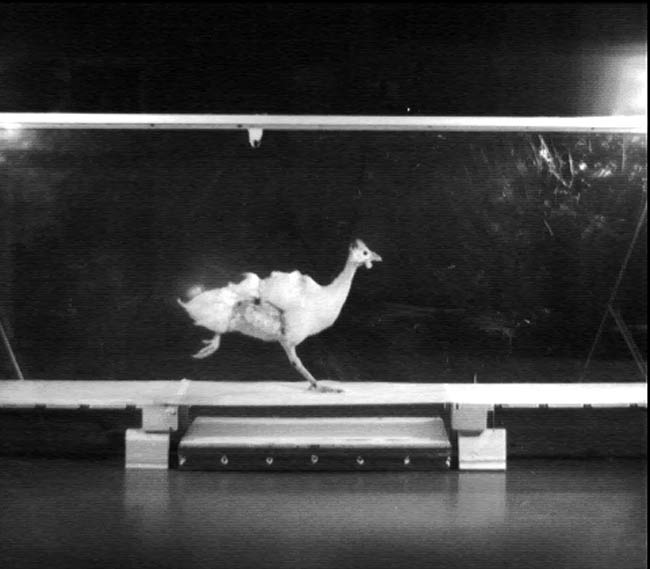Study Reveals Key to Spring in Your Step

You might think scientists knew all there is to know about how humans move. But a new study suggests the joints in your ankles and feet act like springs to help you keep your balance on uneven terrain.
Trip on a crack in the sidewalk, and these springs may save you from falling flat on your face.
"Limbs perform wonderfully on uneven terrain," said Andrew Biewener, a Harvard University biologist and co-author of the study. "Legged animals routinely negotiate rough, unpredictable terrain with agility and stability that outmatches any human-built machine. Yet, we know surprisingly little about how animals accomplish this."
To investigate, the researchers studied how guinea fowl responded when they stepped unexpectedly into a concealed hole while running. The bird was able to keep stable and continue running forward by speeding up [Video].
While guinea fowl move a little differently than humans, the findings of the study can be generalized to humans and other animals, according to Biewener. "It's a very general principle," he told LiveScience.
The birds ran on a force platform, which could sense the forces exerted by the bird's legs on the ground. A high-speed digital camera captured the birds' movements so that the researchers could examine the angles of the hip, knee and ankle and match them to the appropriate forces.
The bird's movements match what is called a mass-spring model, where the bird's body is a mass that sits atop a spring, in this case, its legs. The leg was much springier closer to the ankle and foot than at the hip.
Sign up for the Live Science daily newsletter now
Get the world’s most fascinating discoveries delivered straight to your inbox.
"Ordinary walking is a patterned movement of repeating, predictable motions," Biewener said. "Our work suggests that even falling into a hole while running does not significantly disturb the regularity of hip motion."
But the springier ankle and foot absorb the energy when the leg hits the ground at an unexpectedly steep angle and return it when the leg hits an unexpectedly shallow angle, he said.
And all these adjustments happen in just 26 milliseconds when the guinea fowl falls into the hole.
This study, detailed in the Oct. 10 issue of the Proceedings of the National Academy of Sciences, could help scientists develop improved prosthetic limbs and robots that are better equipped to negotiate an uneven landscape.

Andrea Thompson is an associate editor at Scientific American, where she covers sustainability, energy and the environment. Prior to that, she was a senior writer covering climate science at Climate Central and a reporter and editor at Live Science, where she primarily covered Earth science and the environment. She holds a graduate degree in science health and environmental reporting from New York University, as well as a bachelor of science and and masters of science in atmospheric chemistry from the Georgia Institute of Technology.










